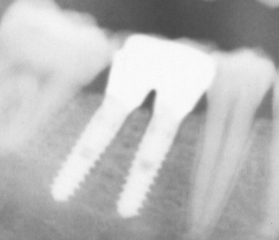
[amazon_link asins=’0267540027,B01IY29J2A,B06WD2CTBD,0867154969,B00MMTTZ0S,B0746FJQMM,B0755CRFN9,B018HM9TTU,B01FQIL6MQ’ template=’ProductCarousel’ store=’finmeacur-20′ marketplace=’US’ link_id=’01d84de4-09ba-11e8-82af-c7447243cce0′]
Introduction:
Until a few decades back when natural tooth was lost, it was replaced by a removable partial Denture, or a fixed prosthesis, Each of these treatment options had their own disadvantages, With the advancement of technology and research, dentistry today has a better option for the replacement of a natural tooth – with dental implants. Dental implant is an artificial substitute to replace the root portion of teeth and put into the bone and gums of mouth. Replacement teeth are then fixed on to these new roots.Dental Implants are a Functional and Desirable Alternative to Conventional Bridges and Dentures . Dental implants allow people who are with missing teeth to be able to smile, speak and chew well and comfortably.
.CLICK & SEE THE PICTURES
What is Dental Implant?
A dental implant is a small man-made titanium screw that serves as the replacement for the root portion of a missing natural tooth. The implant is placed in the bone of the upper or lower jaw and allowed to bond with the bone and serve as an anchor for the replacement tooth. Dental implants can be used to replace a single lost tooth or many missing teeth. Implant supported replacement teeth look, feel and if you’re missing a tooth or more, you may find that there are other things you miss. You may miss your natural smile. You may miss the ability to chew apples, crackers and other food you desire. Maybe you feel self-conscious about your teeth and mouth, or discomfort as remaining teeth shift. And perhaps you’ve experienced muscle strains, an inability to speak clearly, headaches or unease in familiar situations at work, with friends or at home…..
How Do Dental Implants Work?
Dental implants act as artificial roots. They are surgically placed into your jaw, and are the closest substitute to natural teeth in form and function. Once a dental implant is firmly integrated into your jaw, it can be used to support single crowns, bridges and dentures. Whether you are missing one tooth, several teeth or all of your teeth, dental implants may be an option for you.
Types of Implants :
There are three types of implants :
1. Endosseous Implant : These implants are usually shaped like a screw or cylinder. They are placed within the jaw bone.
2. Subperiosteal Implants : These Implants consist of mental frame work that attaches on top of the jaw bone but underneath the gum tissue.
3. Transosteal Implant : These implants are either a metal pin or a U – shaped frame that passes through the jaw bone and the gum tissue, in to the mouth.
Implants are made from metals and alloys such as Titanium, Titanium-Aluminium-V alloy, Chromium-cobalt-mobedium alloy, ceramics.
Advantage of Implant over traditional prosthesis:
The goal of modern dentistry is to return patientas to oral health in a predictable fashion. The partial and complete edentulous patient may be unable to recover normal function, esthetics, comfort, or speech with a traditional removable prosthesis.
The patient’s function when wearing a denture may be reduced to 60% compared with that formerly experienced with natural dentition, however, an implant prosthesis may return the function to near normal limits. The esthetics of the edentulous patient also is affected because of bone atrophy continued resorption leads to irreversible facial changes. An implant stimulates the bone and iMPLANTmaintains its dimension in a manner similar to healthy natural teeth. As a result, the facial features are not compromised by lack of support. In addition, implant supported restorations are positioned in relation to esthetics, function and speech, not in neutral zones of soft tissue support. The soft tissues of the edentulous patient are tender form the effects of thinning mucosa decreased salivary flow, and unstable or unretentive prosthesis.
The implant retained restoration does not require soft tissue support and improves oral comfort. Speech and function are compromised with prostheses form the supporting structures during use. The tongue and peri-oral musculature may be compromised to limit the movement of the mandibular prosthesis. The implant prosthesis is stable and retentive without the efforts of the musculature.
Resources:
http://www.whereincity.com/medical/topic/dental-health/articles/763.htm
http://www.dentalimplantthailand.net/
![Reblog this post [with Zemanta]](https://i0.wp.com/img.zemanta.com/reblog_e.png?w=580)